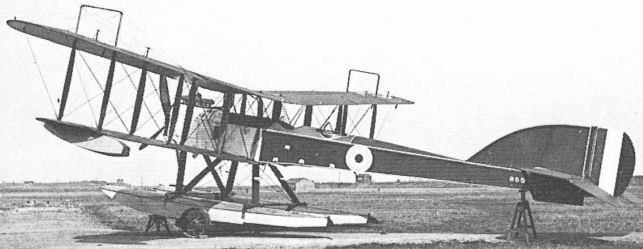Top speed 135 km/h Length 14 m Manufacturer J. Samuel White | Wingspan 20 m First flight 1916 | |
 | ||
The Wight Converted Seaplane was a British twin-float patrol seaplane produced by John Samuel White & Company Limited (Wight Aircraft).
Contents
Design and development
Developed from the unsuccessful Wight Bomber for use as an anti-submarine patrol aircraft, the "Converted" Seaplane was a straightforward adaptation of the landplane bomber to a seaplane. The aircraft was a three-bay biplane with unswept, unequal span, unstaggered wings. It had twin floats under the fuselage and additional floats at tail and wings tips. Initial production aircraft were powered by a 322 hp Rolls-Royce Eagle IV engine mounted in the nose driving a four-bladed propeller, with later production batches being powered by a 265 hp (198 kW) Sunbeam Maori engine owing to shortages of Eagles. Fifty were ordered for the RNAS, of which only 37 were completed.
Operational history
The Converted Seaplane entered service with the RNAS in 1917, operating from bases at Calshot, Dover, Portland and Cherbourg. On 18 August 1917, a Wight Converted Seaplane flying from Cherbourg sank the German U-boat UB-32 with a single 100 lb bomb, the first submarine to be sunk in the English Channel by direct air action. Seven remained in service with the RAF at the end of the First World War.
Operators
Specifications (Seaplane - Eagle engine)
Data from The British Bomber since 1914
General characteristics
Performance
